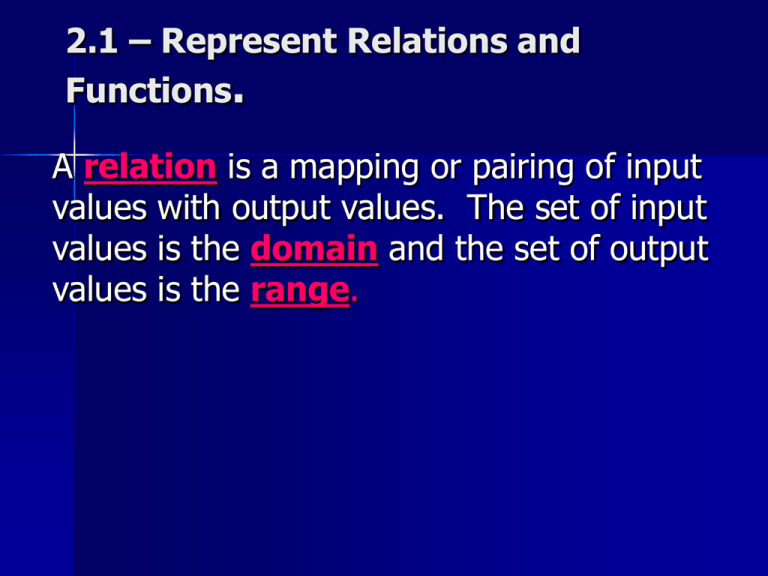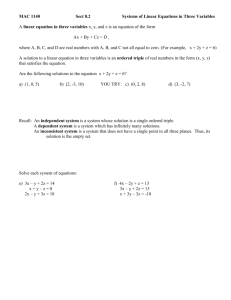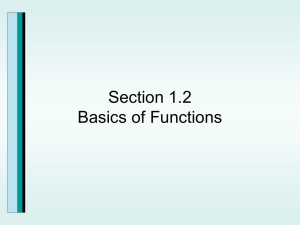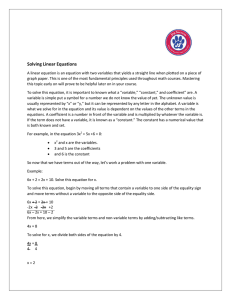2.1 – Represent Relations and Functions.
advertisement

2.1 – Represent Relations and Functions. A relation is a mapping or pairing of input values with output values. The set of input values is the domain and the set of output values is the range. 2.1 – Represent Relations and Functions. 2.1 – Represent Relations and Functions. Example 1: Consider the relation given by the ordered pairs (-2, -3), (-1, 1), (1, 3), (2, -2), and (3, 1) a. Identify the domain and range. b. Represent the relation using a graph and a mapping diagram. 2.1 – Represent Relations and Functions. A function is a relation for which each input has exactly one output. If any input of a relation has more than one output, the relation is not a function. 2.1 – Represent Relations and Functions. Example 2: Tell whether the relation is a function. Explain. 2.1 – Represent Relations and Functions. You can use the graph of a relation to determine whether it is a function by applying the vertical line test. 2.1 – Represent Relations and Functions. 2.1 – Represent Relations and Functions. Many functions can be described by an equation in two variables, such as y = 3x – 5. The input variable (in this case, is x) is called the independent variable (domain). The output variable (in this case, y) is called the dependent variable (range) because its value depends on the value of the input variable. 2.1 – Represent Relations and Functions. 2.1 – Represent Relations and Functions. Example 4: Graph the equation y = -2x - 1 2.1 – Represent Relations and Functions. The function y = -2x – 1 in Example 4 is a linear function because it can be written in the form y = mx + b where m and b are constants. The graph of a linear function is a line. By renaming y as f(x), you can write y =mx + b using function notation. y = mx + b f(x) = mx + b 2.1 – Represent Relations and Functions. Example 5: Tell whether the function is linear. Then evaluate the function when x = -4. a. f(x) = -x2 – 2x + 7 b. g(x) = 5x + 8 2.1 – Represent Relations and Functions.











